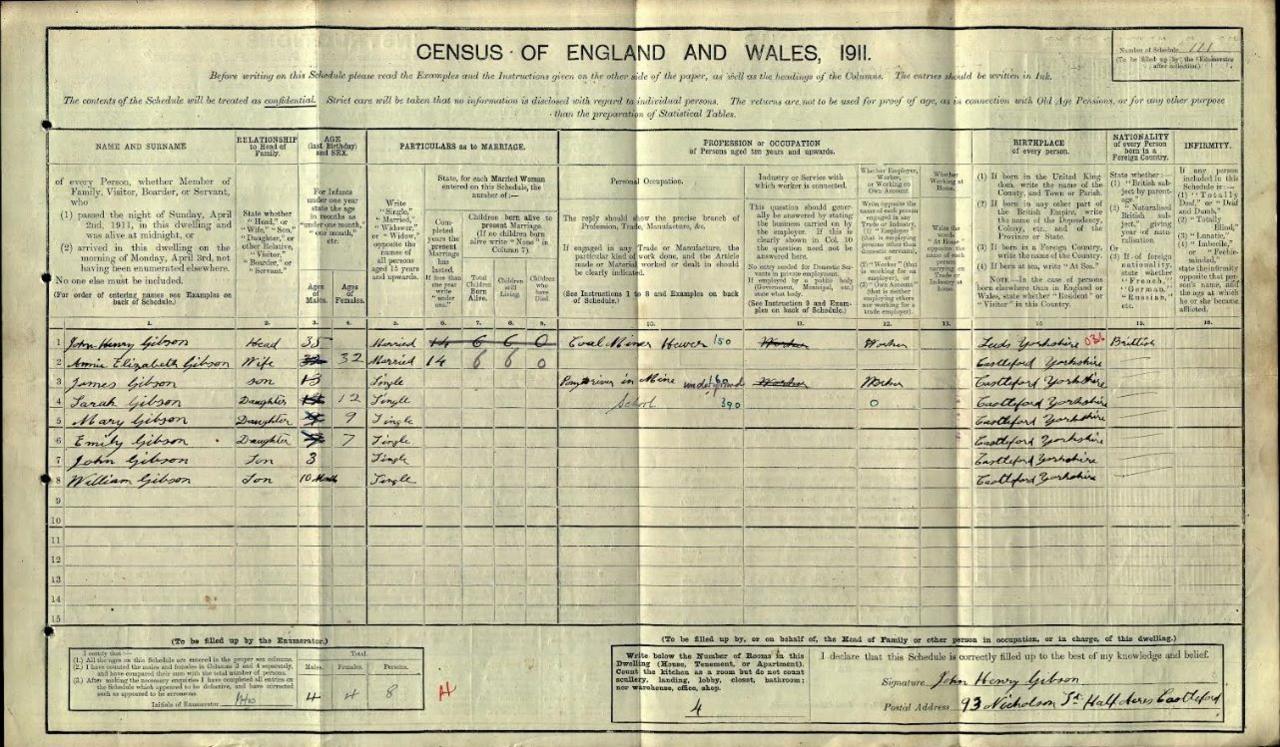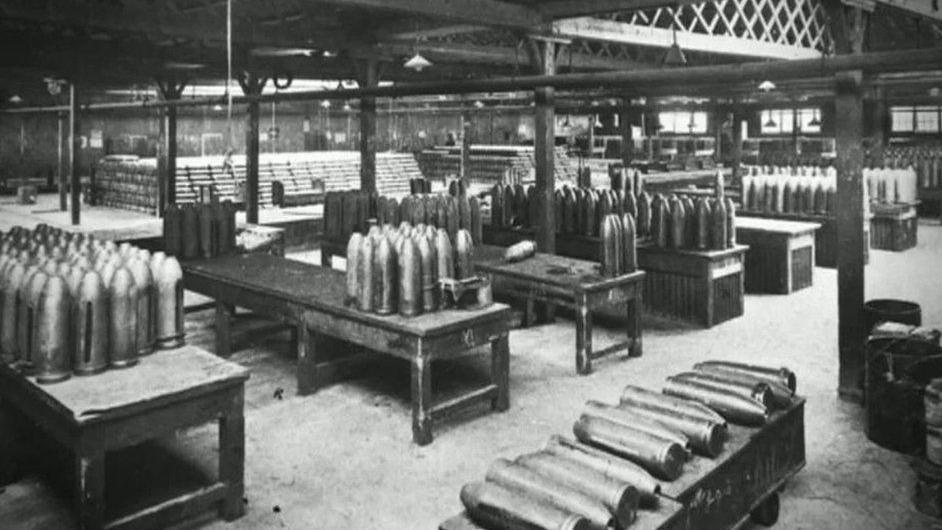Memorial calls for WWI munitions blast victims

Thousands of women from across Yorkshire flocked to work at Barnbow
- Published
Castleford Civic Society is calling for a memorial to remember five women and teenagers killed in an explosion at a World War One munitions factory.
They were among 35 people who died at the Barnbow Munitions factory at Crossgates, Leeds, on 5 December 1916.
One of the Castleford victims 14-year-old Mary Gibson was the youngest person killed in the blast.
The society is appealing for help to find out more about Mary and other victims from the town as part of calls for a lasting memorial.

The factory offered higher wages than many women could expect to earn elsewhere
The other women from Castleford who died were Eliza Grant, 39, a mother of seven children, Edith Levitt, 22, Polly Booth, 21 and Maggie Barker, 17.
Tony Wallis, Castleford councillor and civic society member, said he was particularly keen to find out more about Mary.
“The fact that she was just 14 and just a child makes it such a terrible tragedy but I don’t think that many people are aware of it locally.
“She must have lied about her age to get a job at Barnbow.
"There is no way they would have let her work there if they’d known how old she really was."
Thousands of women from across Yorkshire went to Barnbow to work in the manufacture of the shells vital to the war effort.
The hours were long and the work was arduous, noisy, uncelebrated and dangerous.
But the wages on offer were far higher than many women could expect to earn at the time.

The 1911 census records Mary Gibson as living at Nicholson Street, Castleford, with her parents and five siblings
At the time of the 1911 census, Mary and her family were living on Nicholas Street, in the Half Acres area of the town.
She was one of 170 workers to start a night shift in room 42 on the day of the explosion.
Their work involved inserting a fuse into shells which already contained explosives.
There were about 150 women and girls in the room when the blast happened just before 22:30.
Despite the number of people killed, the tragedy failed to make the headlines at the time.
The government, fearful of denting morale among munitions workers whose efforts were vital for victory, did not tell the public the bare facts of what had happened until six years later.

Councillor Tony Wallis said the women's stories should be remembered
Mr Wallis told the Local Democracy Reporting Service: “Because of the reporting blackout at the time I think a lot of the human stories were lost.
“Sadly we don’t even know if a photograph of Mary even exists.
“We would like to know much more about her short life and the lives of the other Castleford women.
“We are hoping there may be relatives or other people out there who know more about her story and can help us build up a picture."

The munitions produced at the factory were vital for the war effort
The history of Barnbow
When World War One broke out, there was unprecedented demand for ammunition and three businessmen found the site for the factory
It was built within three months and employed 17,000 workers, most of them women
Three separate explosions happened at the factory, but the most serious was the one on 5 December 1916
A further two women were killed on 21 March 1917 and three men lost their lives in a blast on 31 March 1918
Follow BBC Yorkshire on Facebook,, external X (formerly Twitter), external and Instagram., external Send your story ideas to yorkslincs.news@bbc.co.uk
Related topics
- Published10 October 2016

- Published6 December 2019
